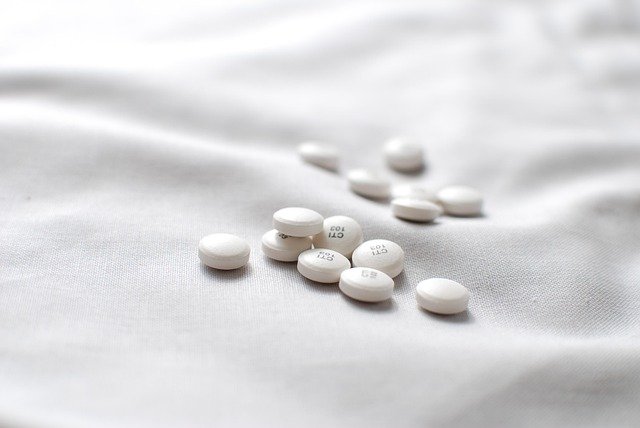Tardive Dyskinesia Treatment Options and Management
Tardive dyskinesia is a neurological condition characterized by involuntary, repetitive movements that can significantly impact quality of life. This medication-induced movement disorder primarily affects the face, tongue, and limbs, developing as a side effect of certain psychiatric medications. While challenging to manage, various treatment approaches and preventive strategies can help patients effectively address this condition and minimize its progression.

Understanding Medications Linked to Tardive Dyskinesia
The development of tardive dyskinesia is closely connected to long-term use of dopamine-blocking medications, particularly antipsychotics. Traditional antipsychotics such as haloperidol, chlorpromazine, and fluphenazine carry higher risks compared to newer atypical antipsychotics like risperidone, olanzapine, and quetiapine. However, all dopamine receptor antagonists can potentially trigger this condition.
Antiemetic medications including metoclopramide and prochlorperazine also pose significant risks when used chronically. These drugs, commonly prescribed for nausea and gastrointestinal disorders, can cause tardive dyskinesia even with relatively short-term exposure. Healthcare providers must carefully weigh the benefits and risks of these medications, especially for long-term treatment plans.
Key Risk Factors for Tardive Dyskinesia Development
Several factors increase an individual’s susceptibility to developing tardive dyskinesia. Age represents a primary risk factor, with older adults experiencing higher incidence rates. Women, particularly postmenopausal women, face increased vulnerability compared to men. Duration and dosage of medication exposure directly correlate with risk levels.
Additional risk factors include diabetes, substance abuse history, and certain psychiatric conditions. Patients with mood disorders may be at higher risk than those with schizophrenia. Genetic factors also play a role, though specific markers are still being researched. Understanding these risk factors helps healthcare providers make informed prescribing decisions and implement appropriate monitoring protocols.
Recognizing Symptoms and Diagnosing Tardive Dyskinesia
Early recognition of tardive dyskinesia symptoms is crucial for effective management. The condition typically manifests as involuntary movements of the face, including lip smacking, tongue protrusion, jaw movements, and facial grimacing. Limb movements may include finger flexing, toe movements, and trunk swaying.
Healthcare professionals use standardized assessment tools like the Abnormal Involuntary Movement Scale (AIMS) to evaluate and monitor symptoms. Regular screening during medication treatment helps identify early signs before they become severe. Video documentation can be valuable for tracking progression and treatment response. Differential diagnosis is important, as other movement disorders can present with similar symptoms.
Effective Treatment Strategies for Tardive Dyskinesia
Treatment approaches for tardive dyskinesia focus on medication management, symptom reduction, and preventing progression. The first step typically involves evaluating the necessity of the causative medication and potentially discontinuing or switching to alternatives with lower risk profiles.
Two FDA-approved medications specifically target tardive dyskinesia: deutetrabenazine and valbenazine. These VMAT2 inhibitors help reduce abnormal movements by decreasing dopamine release in nerve terminals. Tetrabenazine, while not specifically FDA-approved for tardive dyskinesia, is sometimes used off-label.
Additional treatment options include botulinum toxin injections for localized symptoms, particularly in facial muscles. Deep brain stimulation may be considered for severe cases that don’t respond to medications. Supportive therapies such as physical therapy and speech therapy can help manage functional impairments.
| Treatment Option | Provider/Manufacturer | Key Features | Cost Estimation |
|---|---|---|---|
| Deutetrabenazine (Austedo) | Teva Pharmaceuticals | FDA-approved, twice daily dosing | $8,000-$12,000 annually |
| Valbenazine (Ingrezza) | Neurocrine Biosciences | FDA-approved, once daily dosing | $10,000-$15,000 annually |
| Botulinum Toxin | Various healthcare providers | Localized treatment, periodic injections | $300-$800 per session |
| Deep Brain Stimulation | Specialized medical centers | Surgical option for severe cases | $50,000-$100,000 initial cost |
Prices, rates, or cost estimates mentioned in this article are based on the latest available information but may change over time. Independent research is advised before making financial decisions.
Preventing Tardive Dyskinesia Through Proactive Approaches
Prevention remains the most effective strategy for managing tardive dyskinesia. Healthcare providers should use the lowest effective doses of antipsychotic medications and regularly reassess the need for continued treatment. When possible, newer atypical antipsychotics should be considered over traditional alternatives due to their lower risk profiles.
Regular monitoring using standardized assessment tools allows for early detection and intervention. Patient education about symptoms helps individuals recognize early signs and seek prompt medical attention. Lifestyle factors such as maintaining good overall health, managing diabetes effectively, and avoiding substance abuse can potentially reduce risk.
Alternative treatment approaches for underlying psychiatric conditions should be explored when appropriate. This might include psychotherapy, other medication classes, or combination therapies that allow for lower antipsychotic doses.
Managing tardive dyskinesia requires a comprehensive approach involving careful medication selection, regular monitoring, and prompt intervention when symptoms develop. While the condition can be challenging, various treatment options are available to help patients maintain quality of life. Working closely with healthcare providers and staying informed about symptoms and treatment options empowers patients to make informed decisions about their care.
This article is for informational purposes only and should not be considered medical advice. Please consult a qualified healthcare professional for personalized guidance and treatment.




